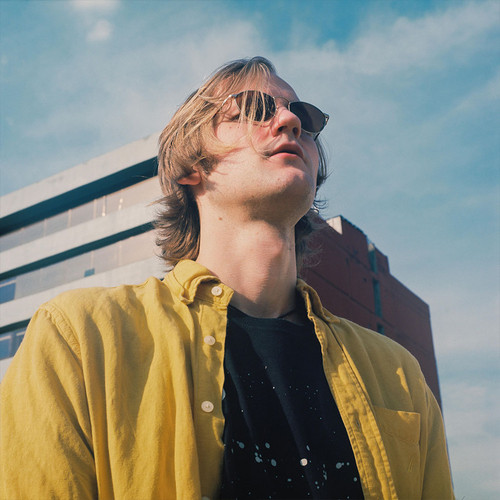
North Carolinian Waldo Witt knows how to make a video. The electronic pop singer and songwriter understands the power of images, and he knows how to underscore and amplify the emotional intensity of his songs through visual storytelling. So far, his clips have been beautifully shot, dramatically acted, and as compelling to follow as any motion picture is. “Crystal Ball,” his last video, was practically a love letter to ’80s cinema: it featured the Chapel Hill artist in a succession of scenes and poses deeply reminiscent of the best-loved and most emotionally provocative movies of the first synthpop era. (Even the titles looked vintage!) “Carteret,” the latest Waldo Witt video, ups the ante with a gripping story-line that borrows equally from dystopian and gangster cinema. He’s an artist who understands the camera – one with a knack for making film-historical tropes his own.
Nobody who knows the artist will be shocked. His music does something very similar: it alludes to prior electronic pop models and juxtaposes them, boldly, with contemporary approaches. Waldo Witt’s music is gorgeously appointed, texturally sophisticated, harmonically rich, and sonically arresting. Once heard, it’s not easily forgotten. Witt makes songs that cry out for video treatments – songs that feel like soundtracks to unforgettable moments. Call it psychedelia, or dream pop, or electronic soul, and he won’t mind; what matters is the profound effect these cuts have on those who listen to them. “Carteret,” for instance, is quintessential Waldo Witt: it’s a waking reverie, a swim in a deep river with dangerous undercurrents.
Sefárdico’s “Carteret” enhances the dreamlike quality of Waldo Witt’s music. The director presents a magic realism treatment on the United States – one populated by a desperate and passionate multicultural youth defined by its opposition to the dominant power group, in this case the Kadabros gang. This is a needle-drop into a deep groove: a look at a subculture struggling, and celebrating, and adapting to a hostile society. But a closer look at the cosmetics suggests a division. The different clown face paint worn by the Kadabros and the minority gangs signify the differing ideologies they present to the world. Narratively speaking, the clown face is also a device to lighten up the very stark situation in which we found ourselves as a country – that we are ultimately divided. Our hero is a young woman with a butterfly chest tattoo whose innocent appearance belies her dedication – and her determination to overthrow the current corrupt and obsolete order. Only by symbolically killing the societal ideal we have of those in power we will be able to celebrate underrepresented voices and move forward as a society.

